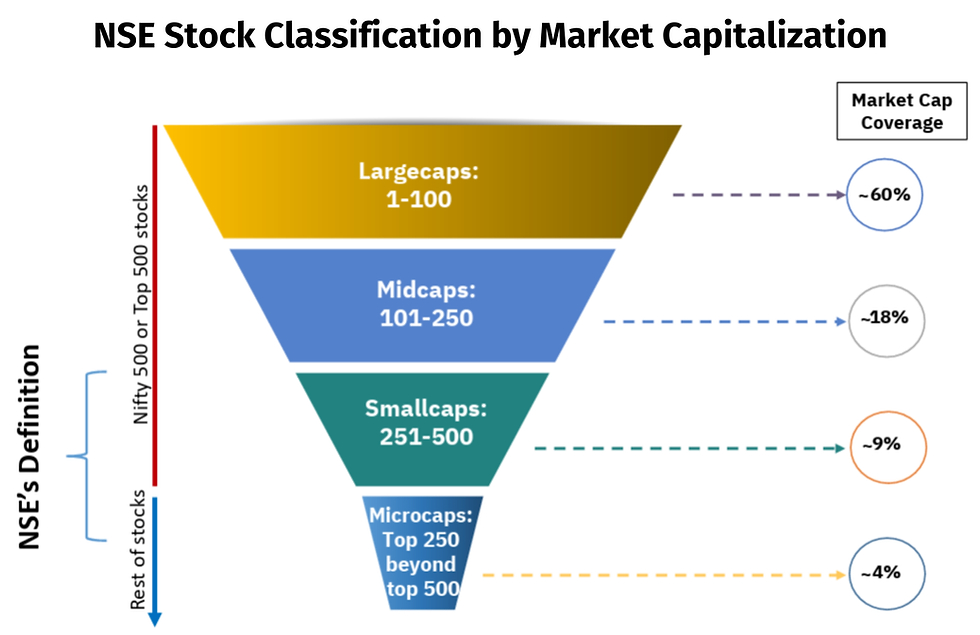The Case For Multi Asset Portfolios
- Akshay Nayak
- May 3, 2023
- 4 min read
When we build our investment portfolios, most of us tend to build portfolios that are too significantly exposed to a single asset class, with negligible exposure to other asset classes. Some portfolios may even be singularly comprised of a particular asset class such as debt or equity. There may be a few circumstances or market contexts where portfolios with lopsided exposure to a single or select few asset classes may generate satisfactory returns. But such cases are few and far between, and conditions that are conducive to lopsided portfolios are almost always unsustainable.
A multi asset approach to portfolio construction, which sees balanced exposure to at least three asset classes within the portfolio is therefore a much more viable and realistic approach. This is because each asset class offers nuances and benefits that are unique to itself and complementary to those that other asset classes offer. Therefore today I am going to discuss the case in favour of creating multi asset portfolios. I will do this by throwing light on the most basic expectations every investor would have from their portfolios, and how multi asset portfolios would help achieve them.

Regardless of the specifics of their expectations, most investors primarily wish to participate in the best performing asset classes to an adequate extent at a given point of time. They would also want to ensure that they get their asset allocation strategies for their major financial goals right. They would also want to ensure that they achieve a level of investment performance that is sustainable and easily measurable over long periods of time. And most obviously, they expect that all of this would allow them to achieve their financial goals smoothly and on time.
Assuming a largely realistic long term post tax return of 10% from equity and 7% from debt would mean that a 60:40 split between equity and debt would see portfolios return around 8.8% over the long term. In most cases this level of return would be enough to allow investors to meet most financial goals, if achieved sustainably. But we as people are mostly wired to constantly look for more. The major challenge here is that our hunger for higher returns cannot always be satiated by increasing portfolio allocations to equity. Therefore the most viable alternative to solve the problem would be gain exposure to other asset classes in our portfolios so as to be able to capture the returns from those asset classes.
Data from a research study conducted by The Mint in December 2022 shows that over the last 12 years (2010-2022) no single asset class has been the best performer for more than 2 years at a stretch. This is laid out in the graphic that follows, which depicts the annual performance of a variety of asset classes during each individual year between 2010 and 2022.

So building portfolios with just two asset classes (equity and debt) may mean that we may need to wait for long periods of time to enjoy outperformance which is likely to last only for a short while. And the global nature of the financial markets and economy, combined with ever changing market contexts necessitate the need to have exposure to a wider variety of asset classes in our portfolios. This means that we may need to go beyond equity and debt and include other asset classes such as gold, international equities, and silver to name a few. Doing this would mean that we improve our chances of always being exposed to one or more asset classes that are among the best performing ones at a given point of time.
This would automatically boost our long term investment performance. The fact that our portfolios would be diversified across a wider variety of asset classes also allows for better risk management within our portfolios. As a result the risk adjusted returns we generate on our portfolios would also improve. In other words, this means that we would be achieving better returns while taking on as much, or sometimes even lesser investment risk than before. This effectively falsifies the widely propagated notion that higher investment returns can be achieved only through exposure to a higher degree of risk.
Constructing a multi asset portfolio therefore allows us to build wealth comfortably and sustainably. Any portfolio that is diversified across a wide variety of asset classes is also likely to be better insulated against market corrections and crashes. Multi asset portfolios are mainly built with market linked financial assets. This makes it much more convenient for investors to gain exposure to certain asset classes such as gold and real estate, which are otherwise only available in physical form. But there are also a few things that must be kept in mind when constructing and working with a multi asset portfolio.
Firstly, any asset class can go through considerable periods of underperformance. We must be willing to stick with the asset class as long as the asset class and their product choices within the asset class are an ideal fit for our financial needs and goals. It is vitally important to spot opportunities within asset classes and act on them at the right time. And once we decide to employ multi asset portfolios for our financial goals, we must ensure that we stick to the asset allocation for each goal and remain consistent with our investments. And all the while, we must ensure that our portfolios are optimally aligned to the goals for which they are designed. Only then can we get the best out of multi asset portfolios.



Comments